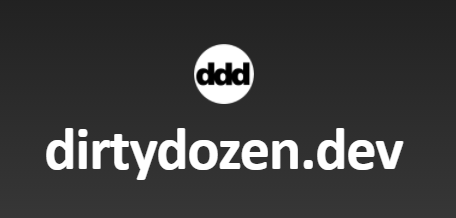dirtydozen.dev
Description
The primary reason why dirtydozen.dev is here is because almost all common programming mistakes just keep occurring – repeatedly! Therefore, the idea was to document these mistakes and make the result of this process widely available to help everyone produce clean code.
This document is a lessons learnt resource that’s been put together on the back of decades of experience in writing code, doing code reviews and producing mission critical solutions built and running on code.
Guidance in this resource can be applied with any programming language and any platform where the compiled code is running on. It’s simply a guide for anyone undertaking programming with any kind of code.
Audience
Mostly developers or programmers at any stage in their programming journey responsible for writing and reviewing code.
Quick Links

plainkube.dev
Description
This document has been put together as result of an exciting learning journey which started with Docker addiction. It then quickly evolved into a spiral of container orchestration episodes involving Docker Swarm and ultimately Kubernetes. Finally, Helm Charts came in to provide that one-click packaging and software delivery mechanism making these modern technologies combined an extremely powerful cocktail.
Why plainkube.dev? Reason is that along this discovery and learning journey I came across several architectural paradigms, methodologies, models, approaches and themes. There isn’t a prescribed way of delivering software end-to-end that one could simply follow – like an instruction manual.
Audience
Mainly tech enthusiasts responsible for writing and delivering software solutions. CTOs, software architects, infrastructure architects and team leads responsible for delivering long term vision in software engineering space.
Quick Links

platformops.dev
Description
Software is no longer delivered in isolation. The days of a manual compile, build, package and deploy are long gone. This shift from manual to automated processes has brought new practices in the world of software development and delivery, mainly around the following 5 points:
- How software is written?
- How software projects are structured?
- How software is packaged and delivered?
- How software is consumed?
- How and where software is running?
In essence, the 5 points above define how important PlatformOps role is in today’s world. The role of platformops.dev is to help you learn how to put together simple as well as complex software architectures and deliver these in “one-click”, or “as code” fashion – reliably, any time of the day.
Audience
Developers, Software and Infrastructure Architects, Infrastructure and Operations Engineers, and DevOps Engineers. In fact anyone wishing to learn what modern software delivery really is all about… and how to do it…
Quick Links

titanicai.dev
Description
The sinking of the RMS Titanic is one of the most infamous shipwrecks in history. On April 15, 1912, during her maiden voyage, the Titanic sank after colliding with an iceberg, killing 1502 out of 2224 passengers and crew. This sensational tragedy shocked the international community and led to better safety regulations for ships.
TitanicAI is built entirely on container technology with Docker. Therefore, to be able to run the code from the TitanicAI GitHub repository, all you need on your local workstation is Docker Installation.
Audience
Mostly developers or programmers at any stage in their programming journey who are passionate about AI and R code in particular.
Quick Links

GitHub
Description
QbitUniverse’s GitHub presence is expanding. We maintain and extend a number of Public Repositories and produce Releases frequently.
We cover a number of programming languages and concepts, such as C#, Java, HTML, JavaScript, PowerShell, Bash. This entails Web Apps, APIs, Console Apps and even Games.
And we also engage in technologies, such as Docker Containers, Kubernetes, Azure and Google Cloud, AI and Machine Learning.
Quick Links
DockerHub
Description
We package our software at QbitUniverse using Docker. Our library of fully functional Docker Images consist of Kubernetes toolkits, Web Apps, APIs, useful CLI scripts, and AI code written with R.
We also maintain a set of core or base Images, such as R code frameworks.
